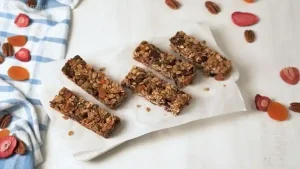Biscotti—those crunchy, twice-baked Italian cookies—are beloved worldwide for their satisfying texture, rich flavor, and versatility. Whether dunked into a cup of coffee, tea, or enjoyed on their own, biscotti have been a part of culinary tradition for centuries. Making biscotti at home is relatively simple, though, like any great recipe, it benefits from a bit of attention to detail.
This guide aims to walk you through the process of making the perfect biscotti, from selecting the right ingredients to baking and storing. Along the way, we’ll also discuss some of the common pitfalls, tips for customization, and how to perfect your technique, based on years of experience and research into what makes a great biscotti.
What Are Biscotti?
Biscotti, which literally means “twice-baked” in Italian, are traditional cookies originating from the Tuscan region. The process involves baking the dough once into a log shape, slicing it, and then baking it again to achieve a crisp, crunchy texture. Biscotti are not meant to be soft. Their crispness is part of the charm, making them perfect for dipping in hot beverages. While the basic recipe remains unchanged, many variations have emerged, including almond, chocolate, and pistachio flavors, as well as adaptations to suit gluten-free or vegan diets.
Key Ingredients
To start, let’s look at the ingredients that go into making a classic biscotti recipe. Don’t be fooled by the simplicity of these items—each plays a crucial role in the final result.
- Flour: The base of any biscotti dough. All-purpose flour is the most common choice, though some variations call for whole wheat or almond flour for added flavor and texture.
- Sugar: Granulated sugar is usually preferred, but for a deeper flavor, brown sugar can be used. For those with dietary concerns, substitutes like coconut sugar or stevia can be used.
- Eggs: These help bind the dough together, and provide moisture to the otherwise dry ingredients. For vegan versions, flax or chia eggs can replace the eggs.
- Butter or Oil: Typically, biscotti recipes call for butter, which adds richness and flavor. However, you can substitute with olive oil or vegetable oil for a slightly lighter, dairy-free option.
- Baking Powder or Baking Soda: These leavening agents help give your biscotti just a little bit of rise without making them too soft.
- Flavorings and Add-ins: Vanilla extract, almond extract, or citrus zest add depth of flavor. Almonds, pistachios, chocolate chips, or dried fruits like cranberries or raisins are popular add-ins, but the options are endless.
Step-by-Step Guide to Making Biscotti
1. Preheat Your Oven and Prepare Your Pan
Set your oven to 350°F (175°C). Line a baking sheet with parchment paper or a silicone mat to prevent the biscotti from sticking.
2. Mix Wet Ingredients
In a large bowl, whisk together your eggs, sugar, and any liquids (such as vanilla or almond extract). If you’re using butter, ensure it is softened so it blends easily. This is where you can incorporate your oils or dairy-free alternatives.
3. Combine Dry Ingredients
In a separate bowl, mix together your flour, baking powder (or soda), and any dry flavorings you might want to include (like cinnamon or salt). It’s important to sift your dry ingredients so that everything blends evenly.
4. Mix the Dough
Gradually add the dry ingredients into the wet mixture, stirring gently until you have a dough that holds together but isn’t too sticky. If you’re adding nuts, chocolate chips, or dried fruit, fold them in at this stage.
5. Form the Dough into Logs
Turn the dough out onto a lightly floured surface and divide it into two equal portions. Shape each portion into a long, flat log about 12 inches (30 cm) long and 3 inches (7 cm) wide. You can adjust the size depending on how thick you want your biscotti to be.
6. First Bake
Place the logs on your prepared baking sheet, spacing them apart. Bake for about 25-30 minutes, or until the dough is firm and lightly golden. The logs should not be overly brown yet.
7. Slice the Logs
Remove the logs from the oven and let them cool for about 10 minutes, making them easier to slice. Using a sharp serrated knife, cut the logs diagonally into 1/2-inch slices. Be gentle when slicing so that they don’t crumble.
8. Second Bake

Lay the sliced biscotti back on the baking sheet, cut-side up. Return them to the oven and bake for another 10-15 minutes until they are golden brown and crisp. This second bake is what gives biscotti their signature crunch.
9. Cool and Store
Once they’re baked to perfection, let your biscotti cool completely on a wire rack. Store them in an airtight container for up to two weeks, or freeze them for longer shelf life. Biscotti are made to last, so you can make them in advance for gatherings or to have on hand for your daily coffee break.
Common Mistakes to Avoid
Making biscotti is relatively easy, but there are a few common mistakes people make that can affect the final product:
- Overmixing the Dough: Biscotti dough should be mixed just until combined. Overmixing can lead to tough, dense cookies.
- Not Baking Long Enough: The key to perfect biscotti is their crispness. If you underbake them, they’ll be too soft and won’t hold up to dipping. Don’t skip the second bake!
- Too Much Sugar: Biscotti are meant to be slightly sweet, but too much sugar can overpower the flavor and affect the texture. Stick to the recommended amounts, and adjust based on your personal taste.
- Not Slicing Evenly: If your biscotti slices aren’t even, they will bake unevenly, leading to some being too soft and others too hard. Use a serrated knife for clean cuts.
Customization Tips
One of the best things about biscotti is that they’re highly customizable. Here are a few ways to tweak the recipe:
- Add Different Nuts: Almonds are traditional, but try pistachios, hazelnuts, or walnuts for something different.
- Go Chocolatey: Chocolate chips or chunks are a favorite addition. You can also dip the biscotti in melted chocolate after they’re baked for an extra indulgent treat.
- Make Them Vegan: Swap the eggs for flax or chia eggs and replace the butter with olive oil or a plant-based butter substitute.
- Experiment with Flavors: Add spices like cinnamon, nutmeg, or cardamom for a spiced variation, or zest lemon, orange, or even lime for a fresh, citrusy twist.
How to Serve Biscotti
Biscotti are traditionally enjoyed with a hot beverage. Here are some classic ways to serve them:
- Coffee or Espresso: The classic pairing. Dunking biscotti in a cup of coffee or espresso softens them just enough to make for a delightful bite.
- Tea: A soothing cup of tea is another great match for biscotti. Try a robust black tea or a delicate green tea.
- Dessert Wines: If you’re feeling fancy, serve your biscotti with a glass of Vin Santo or another dessert wine.
Opinions on Biscotti
- Anna, 65, Italy: “I’ve been making biscotti for as long as I can remember. My grandmother’s recipe was simple but perfect. The key is using high-quality almonds and never skipping the second bake. It’s what makes them truly crunchy!”
- John, 32, USA: “I was skeptical at first—cookies that are meant to be hard? But once I tried them with my coffee, I was hooked. I like to make mine with dark chocolate and pistachios, which adds a nice balance of sweetness and crunch.”
- Chloe, 28, UK: “I’m gluten-free, so I love making biscotti with almond flour. They come out just as good, if not better, than the traditional ones. Plus, they’re a nice treat without the gluten!”
- Carlos, 58, Spain: “My wife loves biscotti with a strong espresso. We often make ours with a mix of almonds and hazelnuts, which gives a lovely nutty flavor. You can never make too many of them—they disappear fast!”
- Priya, 45, India: “Biscotti were a new thing for me until I tried them in Italy. Now, I make them with cashews and dried apricots, which give a lovely chewy contrast to the crispiness. A real crowd-pleaser at my parties.”
Conclusion
Making biscotti is a rewarding experience that results in a delightful treat, perfect for coffee, tea, or just as a snack. By paying attention to key details like the second bake and using quality ingredients, you can ensure your biscotti are both delicious and texturally perfect. Remember, the beauty of biscotti lies in their versatility—experiment with flavors, and don’t be afraid to make the recipe your own.
With these tips, you’ll be able to make biscotti like a pro in no time. Happy baking!









